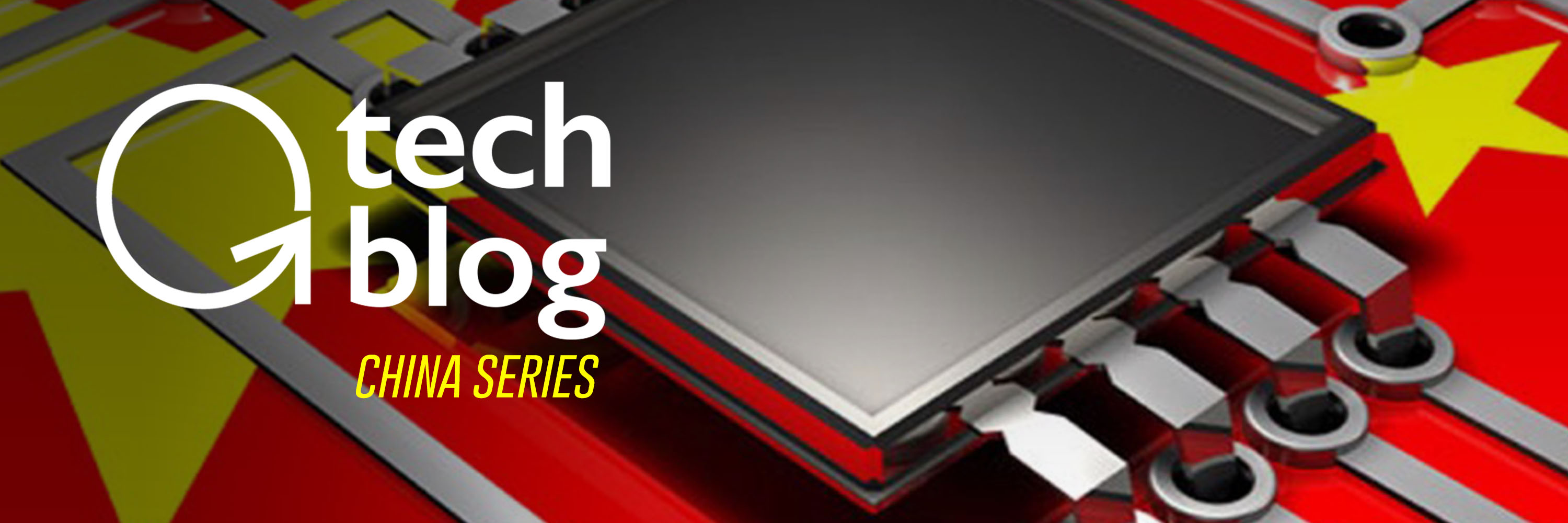
Last year, China’s government put out its plan to lead the world in Artificial Intelligence by 2030.
As Eric Schmidt has explained, “it’s pretty simple. By 2020, they will have caught up. By 2025, they will be better than us. By 2030, they will dominate the Artificial Intelligence industries.”
And the figures don’t lie.
China and Artificial Intelligence Technology
With a $14 trillion GDP, China is predicted to account for over 35 percent of global economic growth from 2017 to 2019 — nearly double the U.S. GDP’s predicted 18 percent.
And AI technology is responsible for a big chunk of that.
PricewaterhouseCoopers recently projected AI’s deployment will add $15.7 trillion to the global GDP by 2030, with China taking home $7 trillion of that total, dwarfing North America’ $3.7 trillion in gains.
In 2017, China accounted for 48 percent of the world’s total Artificial Intelligence companies funding, compared to America’s 38 percent.
Already, Chinese investments in AI, chips and electric vehicles have reached an estimated $300 billion.
Meanwhile, AI giant Alibaba has unveiled plans to invest $15 billion in international research labs from the U.S. to Israel, with others following suit.
Beijing has now mobilized local government officials around AI entrepreneurship and research, led by billions in guiding funds and VC investments.
And behind the scenes, a growing force of driven Artificial Intelligence entrepreneurs trains cutting-edge algorithms on some of the largest datasets available to date.
As discussed by Kai-Fu Lee in his soon-to-be-released book AI Superpowers, four main drivers are tipping the balance in China’s favor:
- Abundant data
- Hungry entrepreneurs empowered by new tools
- Growing Artificial Intelligence expertise
- Mass government funding and support
Let’s dive in.
1. Abundant Data
Perhaps China’s biggest advantage is the sheer quantity of its data.
Tencent’s WeChat platform alone has over 889 million daily active users. That’s more than the entire population of Europe.
Take mobile payments spending: China outstrips the U.S. by a ratio of 50 to 1.
Chinese e-commerce purchases are almost double U.S. totals.
In 2017 alone, China’s ride-hailing company Didi Chuxing completed 7.43 billion rides. Uber and Lyft rides combined? Under 4.4 billion that same year.
And when it comes to bike-sharing rides, Chinese companies are outpacing U.S. competitors at an extraordinary ratio of 300 to 1.
But China’s data advantage involves more than just quantity.
As China witnesses an explosion of O2O (online-to-offline) startups, their data is creating a new intelligence layer unparalleled in the West.
Whereas American users’ payment and transportation data are fragmented across various platforms, Chinese Artificial Intelligence companies like Tencent have created unified online ecosystems that concentrate all your data in one place.
Take mobile payment data, for instance.
While the U.S. saw $112 billion worth of mobile payments in 2016, Chinese mobile payments exceeded $9 trillion in the same year.
That means mobile payment platforms like WeChat Wallet and Alipay have data on everything from your dumplings purchase from a street vendor to your recent 100 RMB donation to an earthquake relief fund. This allows them to generate complex maps charting hundreds of millions of users’ every move.
With the unequaled rise of bike-sharing startups like China’s ofo and Mobike, Chinese companies can now harness deeply textured maps of population movement, allowing them to intuit everything from your working habits to your grocery shopping routine.
And as China’s facial recognition capacities explode, these maps are increasingly populated with faces even when you’re not online.
As Chinese tech companies continue merging users’ online behavior with their physical world, the data they collect offers them a tremendous edge over their Silicon Valley counterparts.
This brings me to our second AI driver: hungry entrepreneurs.
2. Hungry Entrepreneurs
While China’s ‘copycat’ era saw a massive wave of mediocre-quality products and unoriginal mimicry, it also forged some of the most competitive, rapidly iterating entrepreneurs in the world.
Refined by fire, Chinese tech entrepreneurs have stopped at nothing to beat the competition, pulling every trick and tactic to smear, outpace and outsmart parallel startups.
Former founder-director of Google Brain, Andrew Ng noted the hunger raving among Chinese entrepreneurs: “The velocity of work is much faster in China than in most of Silicon Valley. When you spot a business opportunity in China, the window of time you have to respond is very short.”
But as China’s AI expertise has exploded, and startups have learned to tailor American copycat products to a Chinese audience, these entrepreneurs are finally shrugging off their former ‘copycat’ reputation, building businesses with no analogs in the West.
Now home to three of the Seven AI Giants (Baidu, Alibaba and Tencent), China also sees a thriving AI startup ecosystem.
Just this year, China’s computer vision startup SenseTime became the most valuable Artificial Intelligence startup in the world. Capable of identifying your face, gauging your age and even your potential purchasing habits, SenseTime is now a world-class leader in facial recognition technologies, applying their AI technology to everything from traffic surveillance to employee authorization.
After a $600 million Alibaba-led funding round in April, SenseTime raised a further $620 million in its ‘Series C+’ round announced in May, now claiming a valuation of over $4.5 billion.
And SenseTime is not alone. As of this past April, China is home to 168 unicorns, collectively valued at over $628 billion.
But in order to leverage AI for billion-dollar startups, China counts on its growing expertise.
3. Artificial Intelligence Expertise
It is important to note that China is still new to the game.
When deep learning got its big break in 2012 — when a neural network decimated the competition in an international computer vision contest — China had barely woken up to the AI revolution.
But in a few short years, China’s AI community has caught up fast.
While the world’s most elite Artificial Intelligence researchers still largely cluster in the U.S., favoring companies like Google, Chinese tech giants are quickly closing the gap.
Already in academia, Chinese AI researchers stand shoulder-to-shoulder with their American contemporaries. At AAAI’s 2017 conference, an equal number of accepted papers came from U.S.- and China-based researchers.
We’ve also seen increased collaboration between China’s top tech firms and emerging student talent. Tencent, for instance, sponsors scholarships for students at a lab in Hong Kong’s University of Science and Technology, granting them access to masses of WeChat data.
Meanwhile, Baidu, Didi, and Tencent have all set up their own research labs.
China’s Face++ now leads the world in face and image recognition AI, beating out top teams from Google, Microsoft and Facebook at the 2017 COCO image-recognition competition.
Voice recognition software company iFlyTek has not only outcompeted teams from Alphabet’s DeepMind, Facebook and IBM Watson in natural-language processing, but has done so in its “second language” of English.
Now the most valuable AI speech company in the world, iFlyTek’s cutting edge technology could one day enable translation earpieces that instantaneously translate speech into any language.
But perhaps the greatest unifying force behind China’s skyrocketing AI industry is the country's very own central government.
4. China’s Government Directive
The day DeepMind’s AlphaGo beat top-ranking Chinese Go player Ke Jie has gone down in history as China’s “Sputnik Moment.”
Within two months of the AI’s victory, China’s government issued its plan to make China the global center of AI innovation, aiming for a 1 trillion RMB (about $150 billion USD) AI industry by 2030.
But there is a critical difference between China’s New Generation AI Development Plan (released in July 2017) and America’s 2016 AI strategic plan, released under the Obama Administration to encourage ramped-up AI R&D.
While the White House report got modest news coverage and a mildly enthusiastic response from the AI community, this was barely a hiccup in comparison to China’s clarion call.
When the CCP speaks, everyone listens.
Within a year, Chinese VC investors were pouring record sums into AI startups, surpassing the U.S. to make up 48 percent of AI venture funding globally.
Over the past decade, Chinese government spending on STEM research has grown by double digits year on year.
And China’s political system is set up such that local officials are incentivized to outcompete others for leadership in CCP initiatives, each striving to lure in AI companies and entrepreneurs with generous subsidies and advantageous policies.
Mayors across the country (largely in eastern China) have built out innovation zones, incubators and government-backed VC funds, even covering rent and clearing out avenues for AI startups and accelerators.
Beijing plans to invest $2 billion in an AI development park, which would house up to 400 AI enterprises and a national AI lab, driving R&D, patents and societal innovation.
Hangzhou, home to Alibaba’s HQ, has also launched its own AI park, backed by a fund of 10 billion RMB (nearly $1.6 billion USD). But Hangzhou and Beijing are just two of the 19 different cities and provinces investing in AI-driven city infrastructure and policy.
As I discussed last week, cities like Xiong’an New Area are building out entire AI cities in the next two decades, centered around autonomous vehicles, solar panel-embedded roads, and computer vision-geared infrastructure.
Xiong’an New Area is alone projected to take in over $580 billion in infrastructure spending over the next 20 years.
Lastly, local governments have begun to team with China’s leading Artificial Intelligence companies to build up party-corporate complexes.
Acting as a “national team,” companies like Baidu, Alibaba, Tencent and iFlyTek collaborate with national organizations like China’s National Engineering Lab for Deep Learning Technologies to pioneer research and supercharge innovation.
Pulling out all the stops, China’s government is flooding the market with AI-targeted funds as Chinese tech giants and adrenalized startups rise to leverage this capital.
Final Thoughts
Once disregarded as a market of ‘copycats’ looking to Silicon Valley for inspiration and know-how, China’s Artificial Intelligence ecosystem has long departed this stage.
Propelled by an abundance of government funds, smart infrastructure overhauls, leading AI research, and some of the world’s most driven entrepreneurs, China’s Artificial Intelligence ecosystem is unstoppable.
Join Me in China
(1) Webinar with Dr. Kai-Fu Lee: Dr. Kai-Fu Lee — one of the world’s most respected experts on AI — will discuss his latest book AI Superpowers: China, Silicon Valley, and the New World Order. Artificial Intelligence is reshaping the world as we know it. With US-Sino competition heating up, who will own the future of technology? Register here for the free webinar on September 4th, 2018 from 11am - 12:30pm PST
(2) Abundance Global — China: This year, I’m expanding A360 into three key emerging global markets: Central/South America (Rio de Janeiro, Brazil); MENA (Dubai, UAE); and Asia (Shanghai, China). Following my annual China Platinum Trip, A360 Shanghai will dive into China’s remarkable strides in AI and other newly emerging industries.
Topics: Data Entrepreneurship AI Artificial Intellegence Alibaba autonomous vehicles China Baidu WeChat Tencent smart cities industry






